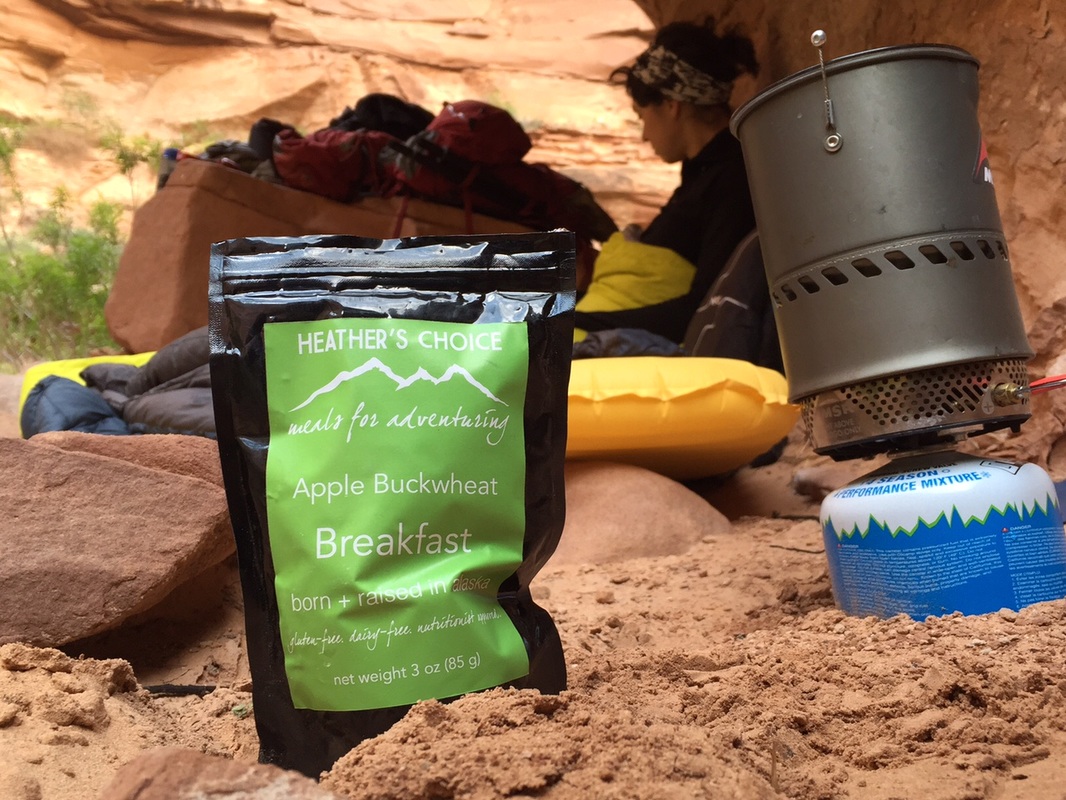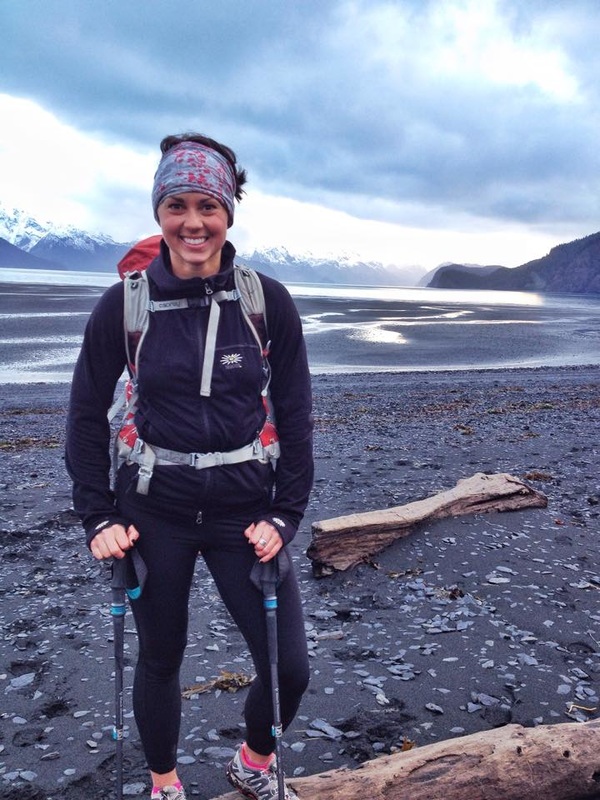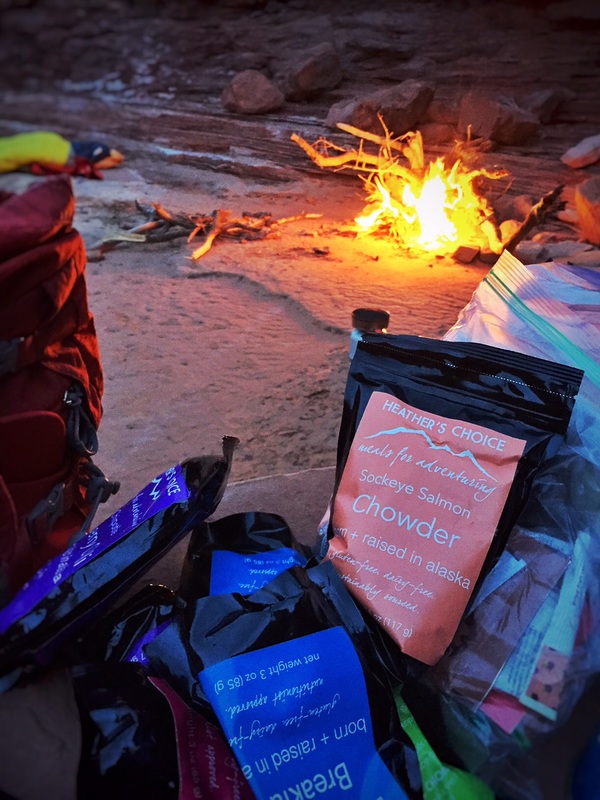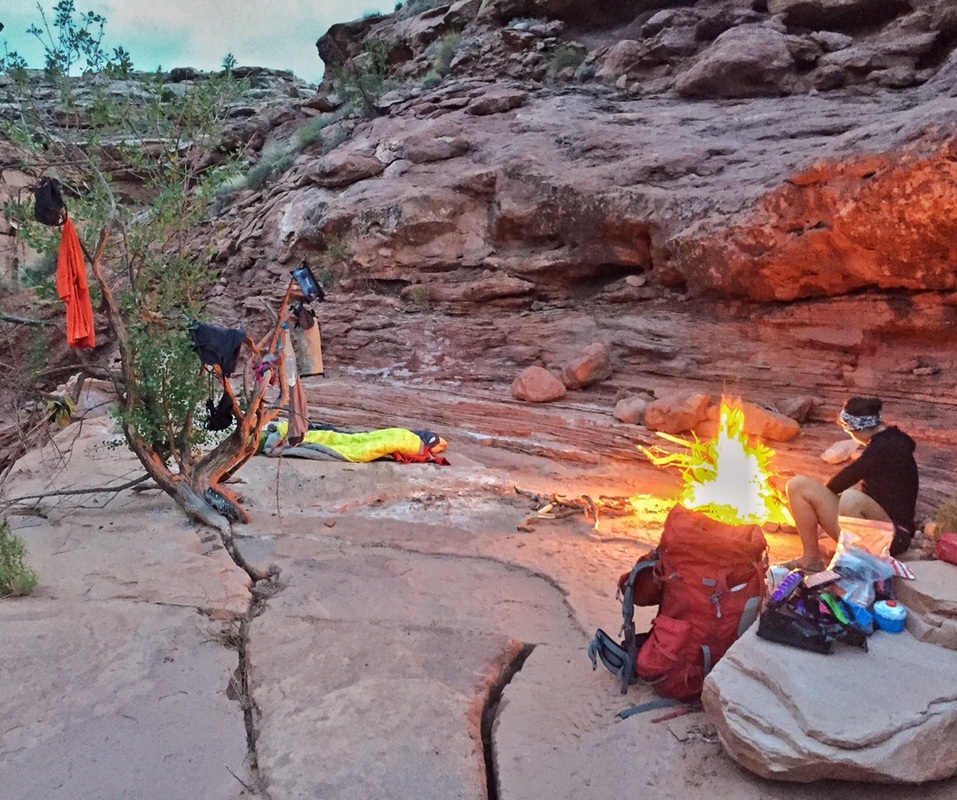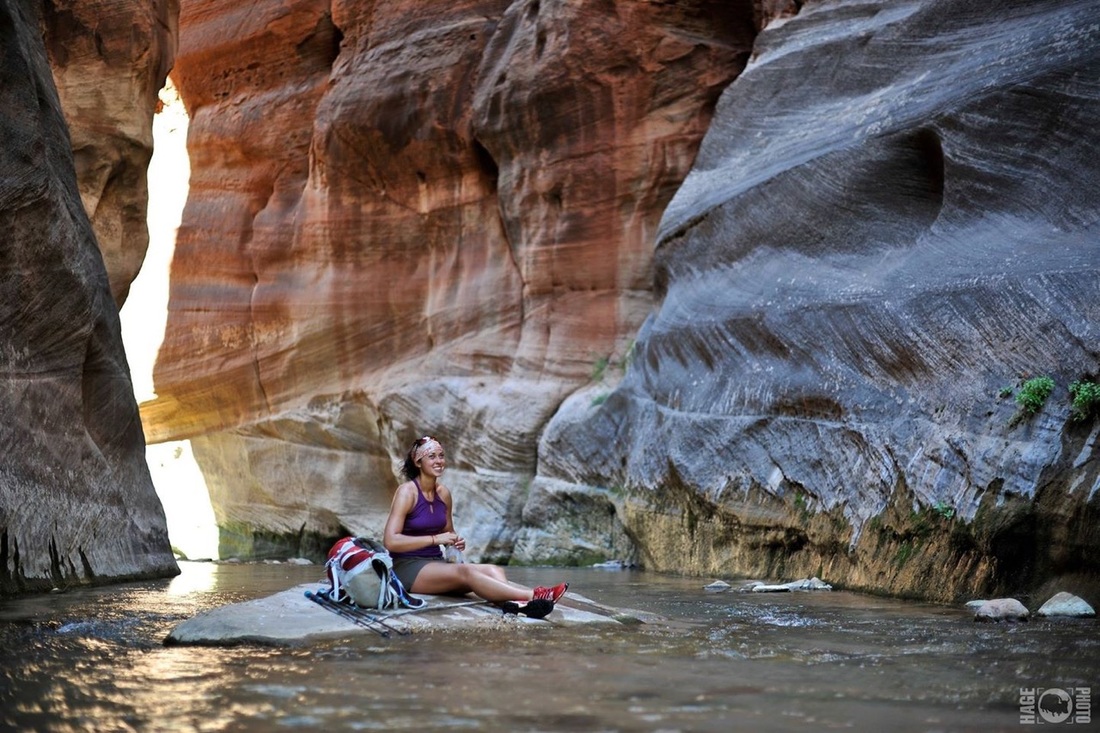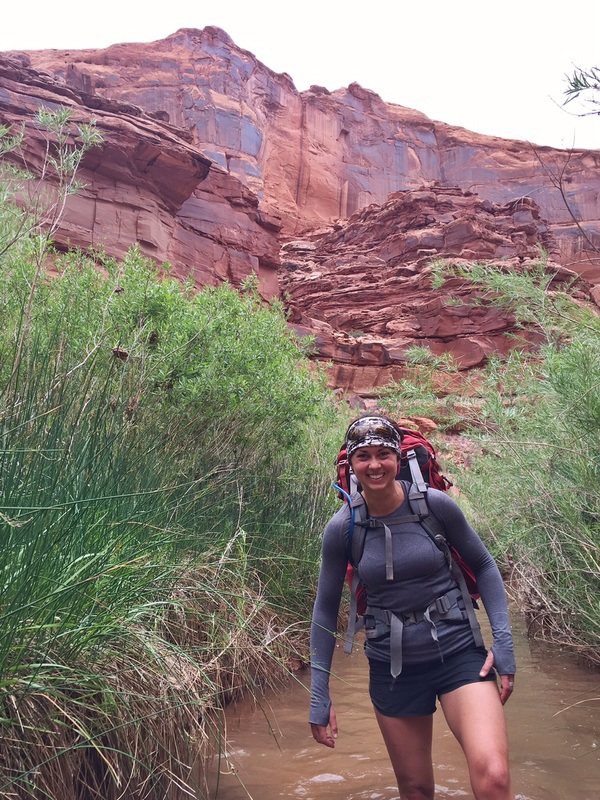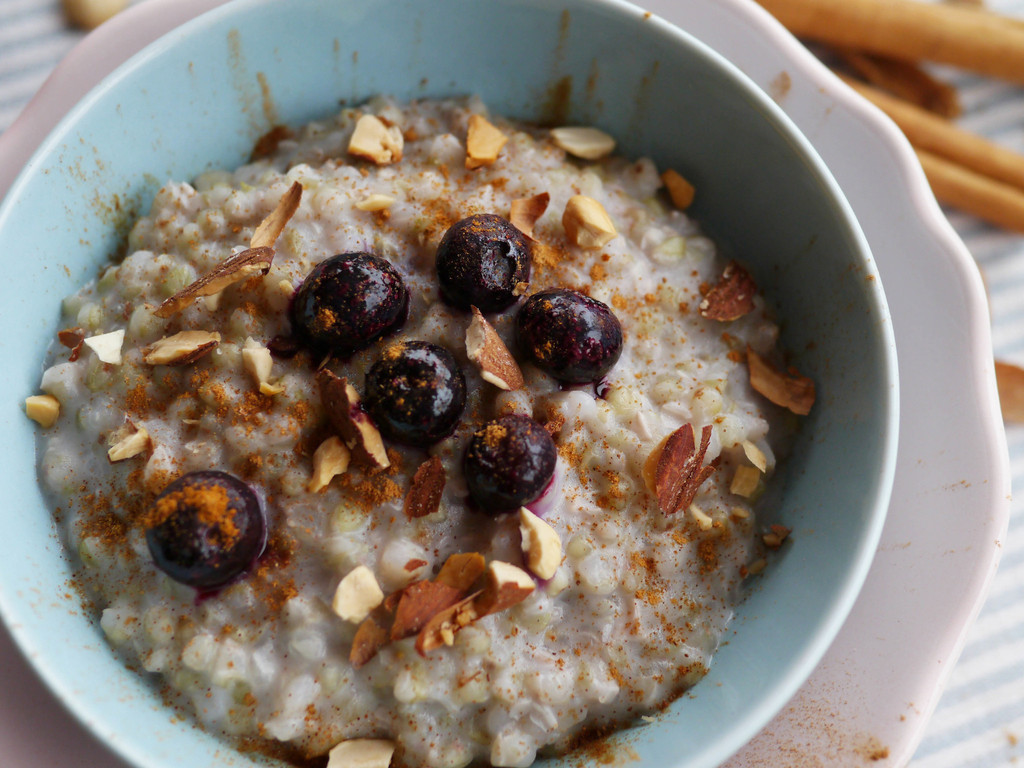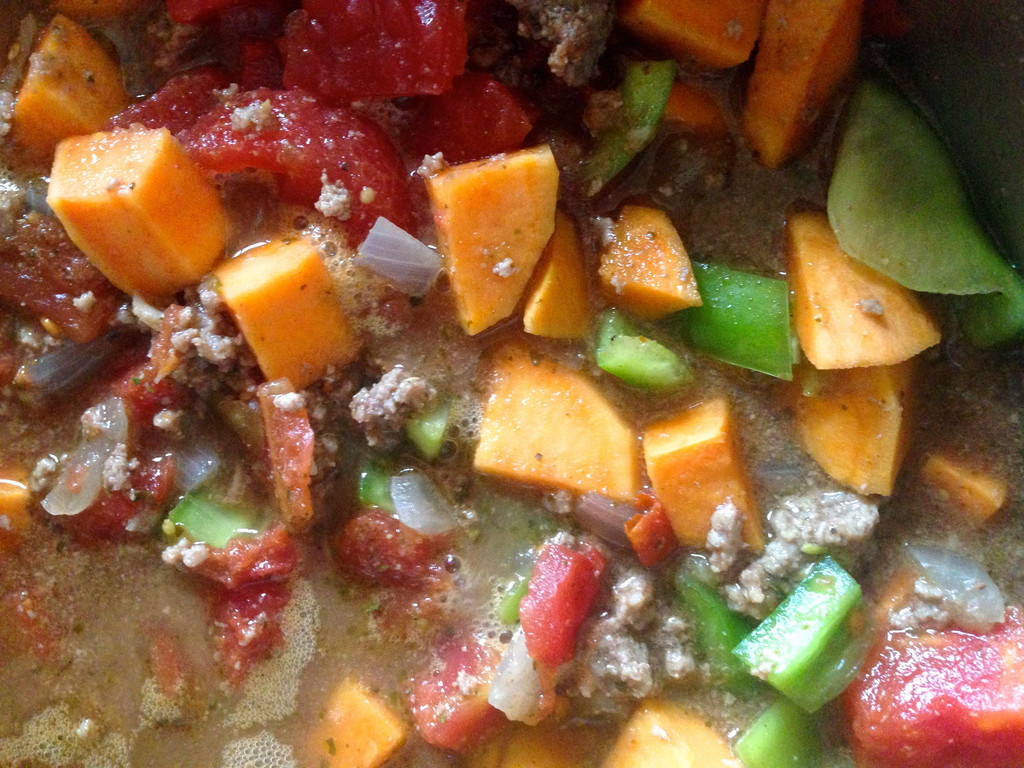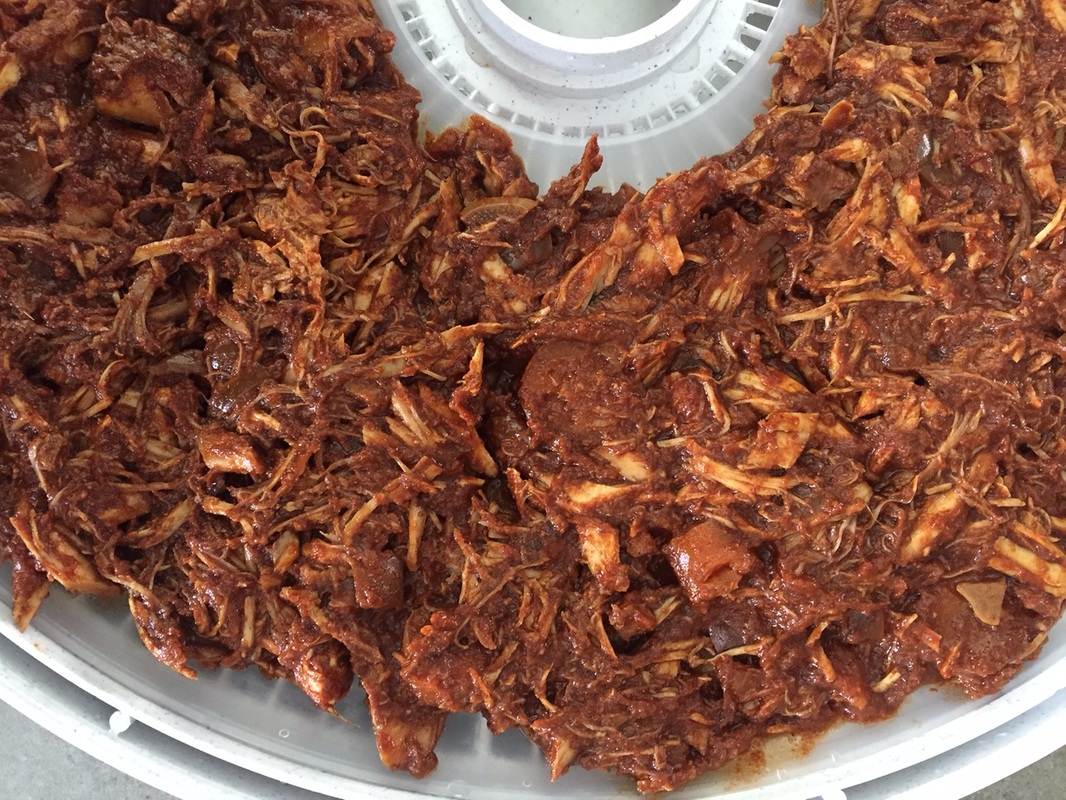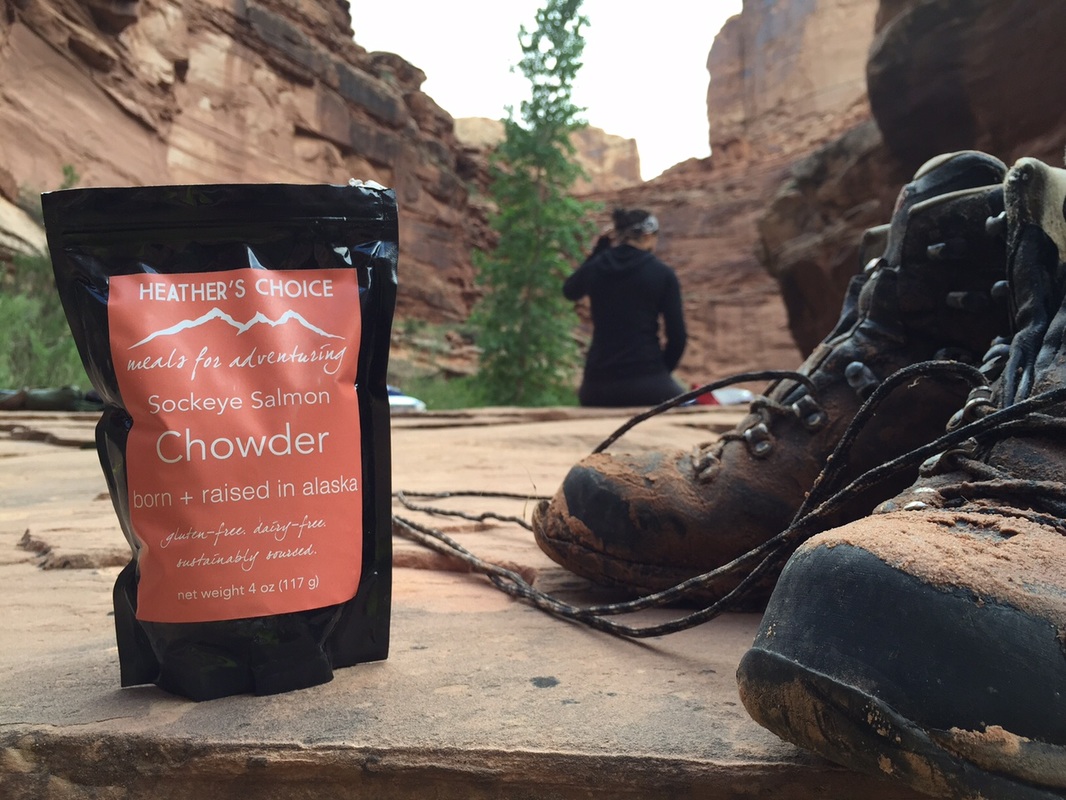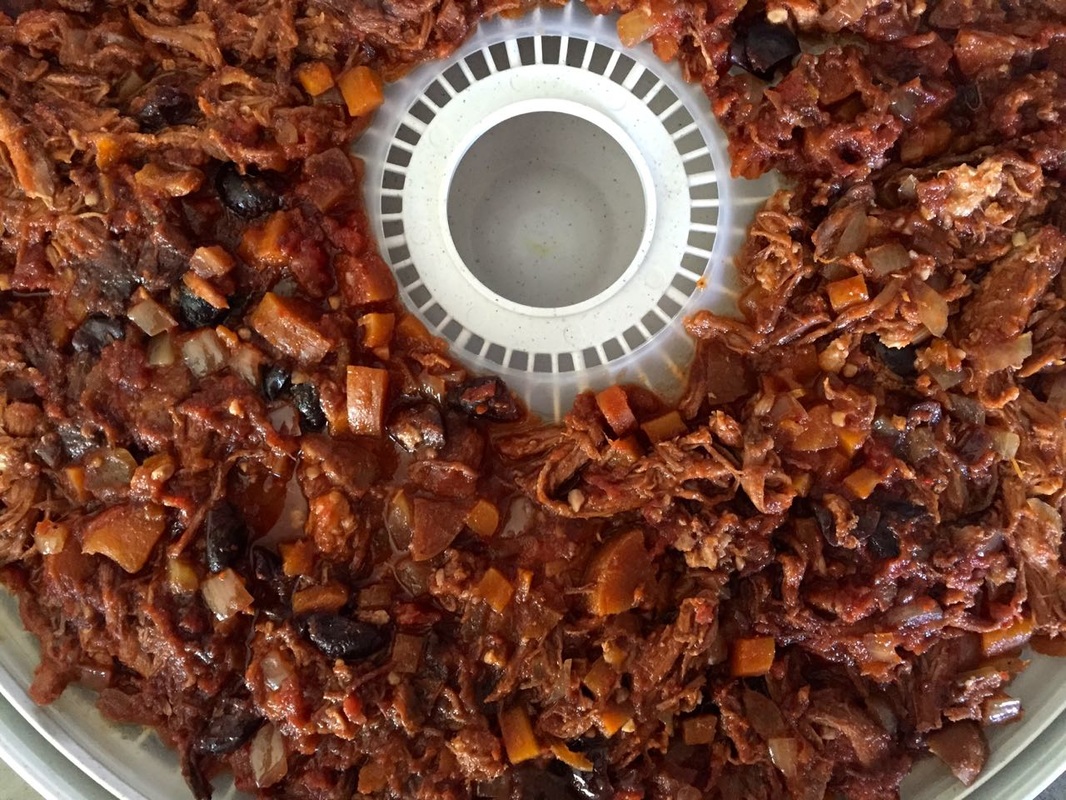Food. Not only is it a biological necessity, but a true deal breaker in the backcountry. For mountain and wilderness hunters, there’s a constant cost benefit analysis being played out between weight and calories with weight often winning the battle. This is often to the detriment of the hunter and can literally mean the difference between staying focused and strong right through to the end of your hunt or being both physically and mentally wasted with days to spare.
The truth is, the average mountain hunter should be spending the same amount of time researching the quality of the calories they pack on a multi-day adventure as they do researching backpacks, tents, ballistics, and optics. The few ounces saved with some ultralight piece of kit will mean nothing if your tank is empty and your body is literally incapable of meeting the demands of the hunt.
For years, our options have been few and far between when it comes to choosing lightweight, backpacking meals, with the overwhelming majority of brands producing fast burning, carbohydrate laden gut bombs that don’t exactly stick to our ribs and fuel us up and over mountains. And given the emerging popularity of higher fat and protein diets, we now know that there are better ways to fuel and sustain our backcountry adventures. But when it came time to plan and pack for an extended hunt, no matter how “clean” you ate at home you had no choice but to suck it up and choke down another Mountain House. That is until now.
Enter, Heather Kelly and her mouth watering selection of high quality, calorie dense, dehydrated backpacking meals. Not only is Heather truly blazing an entirely new trail in the backpacking food sector, she’s one hell of an athlete in her own right. Heather’s a wealth of knowledge on nutrition, performance and our connection with the food we eat. We assure you this is an interview more than worth the time to read. Salivation guaranteed!
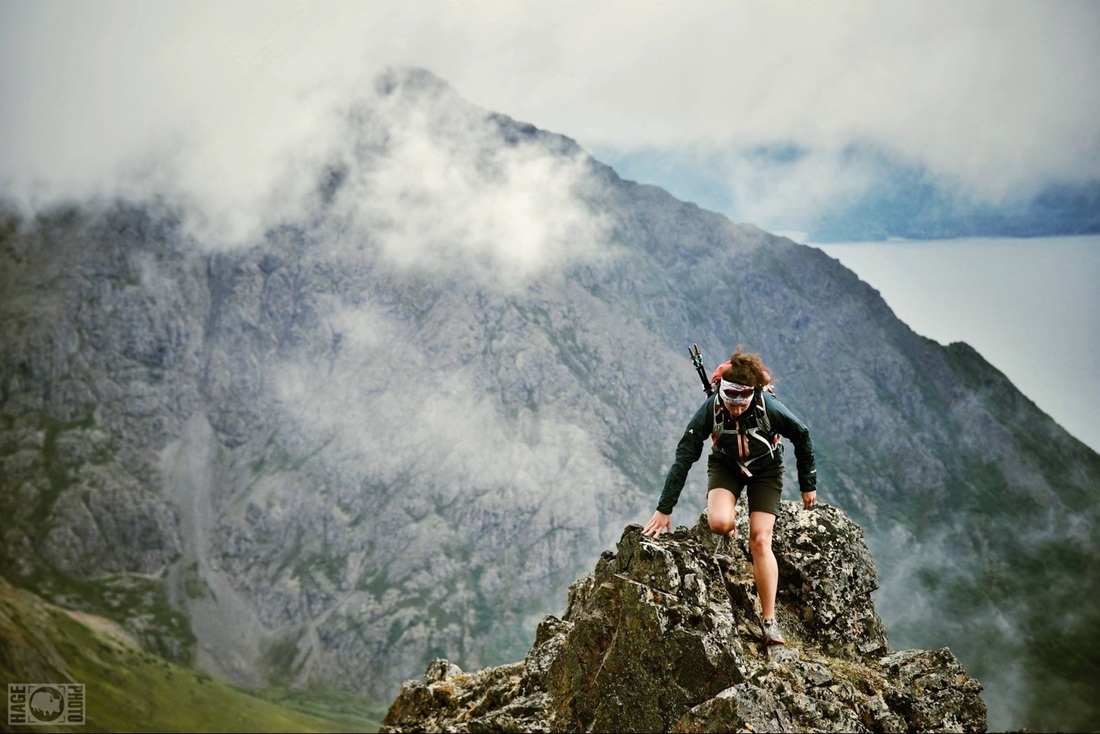
Let’s hear the story of how somebody from Anchorage, Alaska thought ‘You know what, I think I can take on Mountain House and all the other big backpacker meal companies’.
To be honest with you, it’s really hard for me right now to even portray to people what I’m trying to do because I’ll meet somebody and say ‘Hey, I just started my own line of dehydrated food for backpacking’ and they kind of cock their heads and look at me like ‘huh?’ because most people’s experience of backpacking food or camping food, is the shit that you get from Mountain House and they already have such a bitter taste in their mouth as far as what camping food entails. But, sometimes it’s hard for me to portray to people what it is that I’m trying to do which is essentially to build this line of backpacking food or back country food, whatever you want to call it, that is so good you would eat it no matter where you are in the world. It’s been kind of a crazy adventure! I started playing around with my food dehydrator and quickly realized ‘Wow, the stuff I’m making is really good. This tastes awesome. I really like this stuff’ and then to realize that there’s really nothing, in my opinion, on the market that’s even comparable or even the same type of food that I’m making.
So with that said, because my stuff is dehydrated and it’s not freeze-dried like the other backpacking foods out there, I’m not sure if I’m actually competing or if I’m creating something pretty much totally different. So I haven’t quite decided that yet.
It’s such a classic story: I can’t get what I want, is there anything else out there? No. And then you start tinkering and a company is launched and founded.
I think the reason why nobody else has done this yet is because to be honest with you, producing a product is a huge pain in the ass. It has been the most trying and difficult thing I have ever done and this is my second small business I’ve started and my first business was easy. I do sports nutrition and eating psychology consulting and it pays the bills; it’s awesome, it’s a low overhead, it’s fun as hell. But producing a product has just been such a huge obstacle and there’s been so many moving parts and pieces that I just have a shit ton of respect for anybody who goes out there and manufactures anything!
It’s been quite a project but I’m super excited to see that there are so many people that are really pumped about it and super supportive because I think you’re right. There are a lot of people out there who are very passionate about the back country. They’re passionate about hunting or fishing, or basically just living a really healthy lifestyle and it’s shocking that as soon as they step out their backdoor, unless they’re dehydrating their own food, their options for good quality stuff is just not really there. So, it’s really exciting to be putting out a product for people that who eat really healthy at home and really have a ton of values around the type of food that they want to be eating so to now give them a product that allows them to continue to eat really well when you’re, in my opinion, doing what’s most important which is getting outside and pushing your physical limits.
It’s a pretty exciting project but it certainly hasn’t been the easiest thing I’ve ever done.
Teddy Roosevelt has a great quote that applies here: “Nothing in the world is worth having or worth doing unless it means effort, pain, difficulty… I have never in my life envied a human being who led an easy life. I have envied a great many people who led difficult lives and led them well.”
Isn’t that the truth! And on that note I think it’s important people understand my journey to the launch of Heather’s Choice as it really is a story that applies to that mentality. So I’m going to go ahead and tell a little bit of the story.
I was born and raised in Bird Creek, Alaska which is not even really a town. There are maybe a hundred people who live in this small community and it’s just south of Anchorage. Growing up in Alaska, I was fortunate enough to be able to eat things like wild caught fish and halibut and moose meat, and eating well was just kind of the norm, it was expected and I had a mother who did a ton of home cooking so I was pretty spoiled growing up. And my Dad actually started the first microbrewery in Anchorage, Alaska – Bird Creek Brewery – and so growing up basically in a brewery with him was a really cool experience and I want to say not transformative but formative for me in seeing that you’ve just got to get out there and hang up your shingle. If you want to go into business for yourself, you just go out there and do it. So, even though that’s not directly related to Heather’s Choice, I think it’s kind of formative for me and how I run my businesses. I’ve had great examples growing up. I’ve had my Dad who’s done multiple businesses and it just showed me that anything is possible. If you want to go out there and provide a service or provide a product to people, you just go out there and do it.
So anyway, I left Alaska and shipped off to college in Bellingham, Washington when I was 18 and I was immediately recruited for the women’s rowing team ‘cause I’m a tall, broad shouldered woman, and I quickly found out that Western Washington University had already won two consecutive National Championships for women’s rowing and they were chasing their third, and I immediately got stuck into it. I went to my first practice at five o’clock in the morning on a Saturday – my first semester of college – and I was hooked. So I ended up rowing crew collegiately for four years and helped my team to win their fifth and sixth consecutive National Championships and was voted All American my senior year and that was an incredible experience because I wasn’t a really aggressive athlete growing up.
I went snowboarding all the time at Alyeska and did some rock climbing, and got out and had some fun and started raft guiding when I was 18 up in Alaska as well, but doing crew it was like ‘Holy shit! There’s a lot to this.’ There’s the food that you eat before you go on the water at five o’clock in the morning. There’s the food that you’re supposed to eat right after a training session, then what to eat between training sessions ‘cause we were training twice a day, six days a week. And so, through my experience of being a college athlete and training approximately 24 hours a week for four years, I learned a lot about how to feed and water myself. And it was actually really frustrating for me as a college athlete that there wasn’t a lot of nutrition information provided to us. Basically the three pieces of information I was given were: I should eat 11 to 12 servings of grain per day, chocolate milk was the recommended recovery drink post work out, and you’d be better off eating a Snickers Bar rather than nothing after a training session. So you can imagine as a young female, that wasn’t helpful. I needed so much more information than that.
So I actually ended up developing my own Degree in Evolutionary Sports Nutrition so that was my Bachelors and it’s just been kind of a wild ride since then. I developed this inter-disciplinary study for myself and really specialized in sports nutrition and especially Paleo nutrition and it was pretty important for me to have had that experience because now, as a sports nutritionist, I am able to really understand the physical demands of my athletes and what they’re going through and how to fuel for the activities that they’re doing.
I graduated from college and I actually was working as a raft guide in the Summer months. I would row crew all season, go home to Alaska and guide on rivers, and when I was 23 years old, after I graduated, I did my first trip down the Colorado River to the Grand Canyon. So I was a boat captain on a 22 day rafting trip through the Grand Canyon and I remember trying to pack food for that trip and just being dumbfounded because by that point, I had figured out that I didn’t do very well with gluten. I wasn’t really that good with dairy. I was a full-blown Paleo enthusiast by this point so I didn’t do beans, I didn’t do sugar and I just had like a very clean diet. So then when I was looking at the menu that they were providing for this River trip, I realized, ‘Shit! There’s a lot of stuff that I can’t eat’ and so I took it upon myself to pack a lot of my own food for this first trip down the Colorado River, and I ended up packing about fifty pounds of dehydrated food.
That was just a crazy experience and that’s when I got my first dehydrator and started ripping through every book that I could get my hands on and I was dehydrating everything from purple sweet potatoes to fruit leathers, to my own jerky and it was a really fun project. So, while I was on that rafting trip, somebody dropped the bug in my ear ‘you should move to Colorado and be a raft guide down there’ and I had maybe considered Colorado but basically I wanted to go guide somewhere where I was going to be warm and didn’t have to wear rubber boots and a rain jacket every day (like in Alaska).
So I moved to Colorado and got a job guiding on the Poudre River and started working for my first season and got my first pay cheque and I was making six dollars an hour! I was like ‘Oh, wait a second. I just put everything I owned into the back of my pick-up truck and drove here from Alaska and you’re paying me what?’ It was kind of a disaster.
I had started CrossFit around that time because I found I really needed something after four years of rowing crew, I needed some sort of athletic outlet so I started training at CrossFit North Fort Collins. I was working as a raft guide, started doing CrossFit, realized I wasn’t going to make enough money to pay my bills and I thought I needed to move home when my CrossFit coach, Michael Reynolds, said ‘Hey, why don’t you start coaching athletes here on nutrition?’ He knew that I had a Degree and knew that I was super passionate about Paleo because that’s all I talked about and so I started just working one on one with athletes at my gym, and doing really small nutrition seminars and that was exactly four years ago and that’s when my first business OPENutrition was born. So, to this day, I’m still doing nutrition coaching for athletes and I travel to CrossFit affiliates nationwide putting on nutrition seminars and that’s really the backbone of what I do. So, OPENuttrition is still a thriving small business and it has provided me with such an incredible opportunity to work with a whole wide range of athletes from CrossFit to ultra-marathon runners, to rock climbers and beyond and to understand their nutritional needs and really how to fuel them for optimal performance.
So now, we’re almost up to the Heather’s Choice stuff. I eventually decided to go back to school in Colorado at the Institute for the Psychology of Eating and so I’m now a certified Psychology of Eating Coach and a great deal of the work that I do is talking to people about developing a healthy relationship with food which means that you enjoy the food that you eat, you eat foods that leave you feeling strong and satisfied, and really just have this relationship with food that feels nourishing because what people don’t understand is that if you have to eat, which we all do – eating is a biological necessity – you have to eat or you’re going to die. So that’s a big part of the coaching that I do, it is really cultivating a sense of a nourishing and satisfying relationship with food for my clients.
That’s interesting, the majority of what you read about food and food recommendations focuses on the nature of calories, or how a given type of calorie affects your physiological state but rarely covers the psychological and even emotional connection to food and how susceptible we all can be to that aspect of our food relationship.
And that’s something that I want people to understand and not be afraid of – to know that food is emotional. From the time that we pop out of the womb, we cry, we’re given breast milk, we feel better. So it’s hardwired into us that feeding ourselves is going to make us feel better but as athletes, that’s so important for us to know and to embrace because when you’re out in the back country and you’re feeling sluggish and you’re feeling tired and you’re getting cranky and you’re starting to trip and fall down, that’s your body communicating to you: Hey! We need some nutrition. We need to put some calories in the tank in order to keep this party movin’. So, it’s really good for all of us as athletes or non-athletes to really understand our body’s response to a lack of calories or to a surplus of calories, or to different foods that we eat so that we can feed ourselves in such a way that does in fact leave us feeling really strong and really powerful.
Let’s solidify that point because it’s one of the key concepts I wanted you to explain to our readers. This idea that it’s not just about high carb or high sugar snacks. For somebody who is on day three of a backpack, or backcountry hunt, in the middle of nowhere, and they’re looking at having to do yet another 2,000 to 4,000 ft climb with 60 – 70 pounds on their back are there not better fuel sources? Let’s talk about the importance of calories and how the macronutrients play into that.
Yeah. Absolutely. What I want people to really understand is that our bodies need all three of the macronutrients. We need carbohydrates, or sugar whether eating a white potato or a candy cane, it’s all going to be metabolized similarly in the body and used as fuel, so we all need carbohydrates. We all need fats and we all need protein. However, what a lot of people kind of slip up on is finding a good balance of all three of the macronutrients.
So if you can get a balance of those in your diet from a day-to-day basis, you can actually encourage your body to get really efficient at using fat for fuel. Imagine, if you think back to our hunter/gatherer ancestors, they would have had times of feast and they would have had times of famine and if there were times of famine that there was no food available to them, if they weren’t able to access their own body fat stores for energy, they would have been in a boatload of trouble. So, from a human metabolism standpoint, our bodies should ideally be really efficient at using our own body fat stores for fuel. How that gets messed up is if we are constantly overeating carbohydrates or sugar. And the reason why a lot of us tend to overeat carbohydrates or sugar is because it’s a cheap and easy source of fuel, and the body loves it.
So we tend to go out there and follow what we’re told which is to eat 60% to 70% of our calories from carbs or sugar but what that does is it actually influences our metabolism and tells our body ‘hey, there’s always a steady influx of sugar coming in from the packaged oatmeal to the power bar at lunch and the pasta at dinner, so I’m just going to use sugar for fuel and I’m never going to burn fat for fuel’.
This becomes problematic especially for athletes in that your body becomes dependent on the sugar coming in every two or three hours. I work with many, many experienced athletes where they wake up in the morning, they have low blood sugar, they eat a high carbohydrate breakfast, later they’re having a blood sugar crash, so they get a little “hangry”, a little foggy and then two or three hours later, they have a sandwich and chips or whatever, or you’re in the back country and crushing energy bars and freeze-dried meals that are absolutely LOADED with carbs and sugars and result in such a roller coaster that people ride because they aren’t efficient at burning fat for fuel.
So if we can eat a good balance of carbs, proteins and fats, then we can influence our metabolism in such a way that we can get really efficient at burning fat for fuel which is ideal for us as adventure athletes because when you’re in the backcountry for days on end, you want to make sure that you’re not dependent only on your blood sugar stores and what you can replenish. This is a vicious cycle.
So, for anybody who is going out in the back country and doing, let’s say a three plus day hunt, ideally what you should have done in preparation for that is eaten a moderate carb, moderate protein, moderate fat nutrition plan that gives you enough protein in order to sustain your lean muscle mass, enough carbohydrates to fuel whatever intense exercise you’re doing, but then also enough good quality fats to ensure you’re encouraging your body to get really efficient at burning fat for fuel. Does that make sense?
Makes complete sense. One of the questions I’m sure our readers will have is given what you just described what is a safe, balanced set of percentages to start with when you talk about moderate fats and moderate carbohydrates and proteins?
Is there a general rule our readers can use with the disclaimer that they need to know that a lot of this takes some individual tweaking? And is there an ideal timeline if a person looking at this is saying ‘Hey, I’m the carbo loader or I’m the power bar every couple hours when I’m hiking person’ how do I get “converted” to being a little better at using the fat stores they already have?
Great question. So for somebody who is looking for a place to start, I highly encourage people to strive for one gram of protein per pound of body weight. So, if you are 200 pounds, then you would want to be having 200 grams of protein every single day. It’s a lot more than people are typically eating, however, protein is one of the most satiating (filling) of all the macronutrients. It’s the macronutrient that after you eat a steak you go “whoa, I’m full, I’ve eaten” and then also with the protein, it allows us to sustain or gain lean muscle mass which hopefully everybody knows this by now, but being a stronger athlete is always going to be a benefit to you. Whether you’re a mountain runner, or a hunter, or a rafter, having more muscle mass and being strong is always going to work in your favour.
So I recommend that people strive for a gram of protein per pound of body weight for starters and they’ll adjust that up or down depending on the athlete.
But then also one gram of carbohydrates per pound of body weight can be a really great starting place for people. So, there are recommendations from zero carbohydrates to 600 to 800 grams of carbohydrates depending on the nutrition strategy you pick. The reason why I like to give people one gram per pound of body weight as a starting point is because a) it’s based off a body size and b) it’s not so much that you’re going to overfill your muscle and liver glycogen and cause fat gain but it’s not so low that you’re not going to have the get-up-and-go you need to sprint away from the grizzly bear that’s chasing you!
So that’s what I would recommend and for people who are new to this and looking to transition from a high carbohydrate to more of a moderate nutrition plan, I would give it anywhere from three to six weeks at the most. I’ve seen the transition happen for people as fast as two weeks where they start to eat more of a balanced nutrition plan and they feel better right away. And I’ve had other people where even a month into it, they’re still dealing with kind of the low carb blues or the blood sugar dysregulation, so it really depends where somebody is starting from, but typically a 30 day to five week or six week “intervention” is going to really shift your metabolism in a powerful way.
Excellent. And to make that point clear for people, regarding how it can be difficult to get off the “carb train” there is a fairly well known female CrossFit athlete that’s a recovering crack addict, and she found getting off crack easier than getting off sugar!
Yeah, I’ve heard that too! Robb Wolf talks about that in his book Paleo Solution. So, that’s where I start for the people I work with, rather than focusing on them cutting out sugar, the first thing I’ll have them do is really up the amount of protein they’re eating because if you do that, you walk away from your meals feeling more full, feeling more satisfied and typically your cognition is better and your energy levels are better, and you find that you’re not reaching for so much sugar ‘cause you’re not hungry all the time. So rather than focusing on eliminating sugar, focus on increasing the good quality proteins and fats that you’re eating and see what that does for your hunger regulation.
Right, makes sense. And that sugar/crack example is just to help people understand that it’s not something where you snap your fingers and all of a sudden you’re Paleo. Depending on the person, it can take quite a bit of time to get that balance sorted out.
Yeah, absolutely. Another point I want to throw out there, another question will come up a lot is: people will say well what’s Paleo and do you advocate a Paleo diet? And what the Paleo diet is to me, is really a template for eating in such a way that our bodies operate optimally so by really having a diet that’s balanced in proteins, good quality fats and good carbohydrates, and it’s focusing on quality of foods. That means eating wild caught fish, grass-fed meat, lots of fruits and vegetables and high quality fats like lard, tallow, duck fat, nuts and seeds, things like that but whether or not you need to go full-blown Paleo, or whether or not Paleo is the end all be all, I wouldn’t say that that’s the case and I’m not a die hard Paleo fanatic even though I advocate a Paleo diet to a lot of my clients. Instead, Paleo is a fantastic framework for us to work within and a really great starting place for anybody looking to improve the quality of their nutrition plan.
It certainly seems that the pendulum has swung in the “Paleo” community to include a less die hard emphasis on total elimination of certain foods to a more moderate balance across all the macronutrient profiles – there is a lot of grey area to play around with is there not?
Yes. Absolutely and for me a lot of the Heather’s Choice meals, snacks and breakfasts that I’m making are Paleo friendly. However, I’m not looking to shove myself into a category that is limiting. For example, my breakfast right now has buckwheat in it which is maybe not technically Paleo, however it’s a really nutrient dense food and it’s gluten free and it’s frickin’ delicious and I’m excited for people to have it in the morning as a great option instead of oatmeal. And I look forward to having other Heather’s Choice meals that include things like white rice or something along those lines. So, that’s where I don’t want people to get freaked out about the Paleo rules and instead, to know that we want to be striving for nutritional balance regardless of what food we’re picking.
The key is to think about food in a healthy, sustainable and balanced way, not just the quickest way to get the job done.
Yeah. Absolutely. I’d love to wrap up the story of how Heather’s Choice came to be. Does that sound good?
Of course!
I left off with going back to school. So I became an Eating Psychology Coach, and continued to do Crossfit and worked with athletes one-on-one, and continued to do my own adventures. I’ve now rafted the Grand Canyon three times as a boat captain and every time, it’s been the best thing I’ve ever done. It’s my favourite trip on Earth!
But it was going on more of these rafting trips and pack rafting and hiking trips that I realized, wow there really aren’t any good food options for me. I would like to have a meal that’s gluten free, that’s dairy free, it’s high in protein and it’s made with good quality fats. It has organic produce and enough carbohydrates to sustain me for the day and so by going out and doing enough of my own trips and dehydrating all my own food, I started to come up with a really great bank of recipes whether that was for snacks or dinner meals. And so it was last Spring, it was one year ago that I did a backpacking trip on the Grand Canyon on the Thunder River Loop and it was three nights and four days and I took the first real prototypes for Heather’s Choice which was my chocolate chili and my packaroons and my pasghetti, and on that trip I realized this stuff is really good and I actually want to take the giant step forward and start to turn this into a business.
So I went home to Alaska and started field testing and handing out the meals to my friends and getting really good feedback. I started actually selling in August of 2014 and it very quickly exceeded my expectations! The demand exceeded my supply instantly and it’s been a year now that I have been working really hard to attempt to keep up with the demand. Currently everything is on pre-order for the 2015 Summer season and it’s just been incredible the amount of support that I’ve received from the hunting community, the mountaineering community, rafting, climbing, travelers, whoever, it’s just been amazing to see people from3 the back country community being in such strong support of this product and this business.
Buckwheat Breakfast
It was a long time coming! It was like a hallelujah moment when I found the website. Thank goodness we finally actually have something that is backpacking friendly but in line with a healthier, balanced, and nutrient dense diet.
To be clear, you can definitely go out there and put together your own sort of backcountry balanced nutrition plan which might end up including things like oatmeal packaged with whey protein isolate powder and for lunches and dinners maybe it ends up being jerky and some fruit and some nuts but at the end of the day what do we really want after a long day in wilderness? We want to sit down and have a hot meal and that option for a gluten free, dairy free balanced meal just hasn’t been there. So it’s been pretty awesome. I actually just had the nutrition facts run on my meals and all of them are coming in at approximately 600 calories with a substantial amount of protein – anywhere from 30 to 45 grams of protein per serving and it’s really moderate in the carbohydrates which are anywhere from 40 to 60, I believe.
Then all the calories are being rounded out with good quality fats. So what you’re going to see is that most conventional backpacking meals are really high in carbohydrates – that’s where most of the calories are coming from – they’re probably pretty low in fat and then, honestly, a lot of times they’re fairly low in protein so most of what you’re getting is just a shit ton of carbohydrates or sugar. So that’s where with Heather’s Choice I’m trying to create the really balanced dinner meals that you can eat in the back country and feel really satisfied and feel really content and also not have any of the typical digestive upset that people get from gluten, dairy, or sugar laden meals.
That segues nicely into one of the questions I’m sure many of our readers will have and I think it’s obvious we’re on board with what you’re trying to do, but a lot of people will look at the price of Mountain House or another brand and compare that to Heather’s Choice and see that essentially across the board your products are close to double the price of the “big brands”. So the question is: why choose Heather’s Choice over the others?
“Honest” Bison Rancheros Up Close and Personal
There are a few parts to this. Heather’s Choice is different from the other backpacking meal options that are out there.
For starters, it’s dehydrated instead of freeze-dried. So when you buy a freeze-dried meal, it’s typically going to be freeze-dried individual ingredients that are mixed together in the bag and then when you add hot water, the hope is that the flavours are going to mingle and you’re going to have this comprehensive meal.
However, with Heather’s Choice, it’s all dehydrated and we actually cook the meals together so we make the chocolate chili as chocolate chili and then dehydrate it as such. So when you rehydrate it, it already tastes like chocolate chili because we made it a really dynamite meal before it ever hit the dehydrator trays.
So the first thing you’re going to notice is it’s going to taste very different and it actually tastes like a meal that you would have at home. All of these recipes are ones that I make for myself on a weekly basis essentially, so it’s all stuff that I would eat no matter where I am.
The other part of it and the really big thing that I want people to understand too is that all of the backpacking meals that are out there use conventionally raised meats. There’s maybe a select few that incorporate wild caught salmon but you’re going to pay $13/$14 for those meals and that’s right around the price of Heather’s Choice meals – I’m firmly committed to using sustainable sources of protein. So our rancheros that’s made with bison, we actually partner with a company called Honest Bison based out of Wisconsin to supply us with one hundred percent grass-fed bison which means that the fat content of the meat is totally different. It’s much lower than conventionally raised meats but also the nutritional value is way higher because these animals are eating a really nutrient rich diet of pasture. Which means, you’re getting more nutrition from the protein. You’re getting more protein than you would from other backpacking meals, and you’re also getting a hardy 600 calories for every serving.
So you’re going to get a full meal portion with every dinner and it’s going to be coming from sustainably sourced meats whether it’s wild caught Alaskan sockeye salmon, or grass-fed bison, or one hundred percent grass-fed beef.
So the quality is completely different and then also our carbohydrates are coming from things like sweet potatoes and butternut squash and white potatoes, and the reason for that is because again, you’re going to get a lot more nutrition from a bright orange sweet potato than you are from pasta. It may seem crazy to people that Heather’s Choice is literally twice as much as a conventional backpacking meal, but I swear to you, you’re going to get twice as much value whether it’s in the terms of protein or nutrition or, supporting something that honestly, I think a lot of people in the backpacking community would want to support which is: raising animals in a humane way that is good for the environment and good for the critters themselves.
Chicken Dorowat
Would it be fair to say that because of the higher quality of the Heather’s Choice meals, someone would be likely to save a bit of money by not having to buy the usual calorie supporting foods? So the meal itself may cost a little more, but you are less likely to need to supplement it with bars, snacks, chocolate and other fillers?
Absolutely! So I think a really good thing for people to recognize for themselves is that their body doesn’t know the difference between ‘oh hey you know that last meal you ate didn’t really have enough Vitamin E in it, you should go eat like a Vitamin E rich food’, instead when the body is deficient in nutrients, it just says ‘I’m hungry!’ and until you get your nutritional needs met, the body will continue to say ‘I’m hungry’ and that’s why you see so many people who are maybe overweight, yet underfed. They’re eating plenty of calories but they’re not getting in hardly any of the nutrition that they need. So absolutely, by eating really nutrient dense food, then you get more bang for your buck and you’re going to find that you don’t need to eat as much as often. And just like we talked about earlier with the whole fat metabolism thing, if you convince your body to get really good at burning fat for fuel, you’ve got weeks and weeks of calories on board already that you should be able to access.
Exactly! That’s an absolutely essential point. The average mountain hunter, fisher, backpacker, or adventurer needs to learn that for themselves.
That would be nice. And so I feel like people have a wide range of options. Your options are basically: you can eat what’s available now and live with the blood sugar roller coaster and live with the carb ups and downs, or the carb crashes of a carb dependency, or you can make a conscious shift towards improving your nutrition plan and really feeling the difference in your own performance and dialling in for yourself: ‘Okay, how many carbohydrates do I need on any given day? How much protein do I need?’ and if you’re going to go that route, then you’re either going to dehydrate your own food which I think is a frickin’ blast and I encourage everybody to own a dehydrator, but hopefully Heather’s Choice can fill in the gaps for people if you don’t have the time to dehydrate your own food, or you’re wanting to just to have somebody else do all the food prep for you.
Because my ultimate goal with Heather’s Choice is to have a full day’s worth of calories for anybody so you can go and you can order your breakfast, your snacks and your dinner meals right from Heather’s Choice and not have to think twice about whether or not it’s going to be enough food.
I think that would be very well received in our community. The one piece of equipment you have total and complete control over is your own body. People in the hunting community spend hours upon hours, if not months and even years trying to determine what’s the right rifle or calibre, or right bow or right pack – they geek out on their gear but they don’t geek out on their bodies enough – and that’s something if more people spent the time tweaking and figuring out, they would have a better time in the back country.
That’s a fantastic point and I’ll tell a short and sweet kind of funny story. I just came off a pack rafting trip right outside of Canyonlands National Park here in Utah, and we were out for four days and three nights. This is a really physically demanding trip with a lot of bushwhacking, walking through sand and carrying 45 pound packs with boats in them and I got to the end of the trip and came up to the trail head and this man approaches me and says, “Hey! Did you just do the Labyrinth trip?” and I said “Yeah. I just got done.” And he says, “Oh, man! My son and I just flew all the way down here from Alaska and we started the trip and we saw how treacherous the travel was and how slow we were going, and we had to turn around and bag the trip because we hadn’t brought enough food with us.”
And you can imagine, this guy looked at me coming up the trail and was just pissed! People don’t realize just how critical food is for having a good trip!
You and I both know that food is a real morale booster and you can be in the back country and be dragging ass and have a really good snack or really good meal and snap back so quickly. So people do need to realize that, yeah, I would argue that food is the most important piece of equipment that you’re going to bring with you on a back country trip ‘cause without enough food or without good quality food, you’re going to find yourself in a world of hurt.
Absolutely. I think that story is a perfect example of without the right food, the trip you’ve planned all year or even many years for can end up being a moot point. The rest of your gear may not matter if you don’t have the calories or the capability to endure the trip or the task at hand.
Yeah. Absolutely. So I hope that by doing Heather’s Choice I’m producing a product through which I can actually provide a lot of knowledge and wisdom and information that people can find useful in how to prepare and how to fuel whatever athletic endeavour it is that they want to do.
Alright, let’s close this off with some rapid fire questions:
It sounds like you like to do quite a bit of adventuring in the back country, what’s the toughest trip you’ve ever been on?
Oh goodness. It really depends because they’re all frickin’ brutal in their own right. One of my first backpacking trips sure was a tough one, so I would say my first backpacking trip in Denali National Park. We did this quick two night trip from outside the Park into the Park and we were carrying heavy packs and then floating out the Sanctuary River and so on this trip, I had no idea how to load a backpack. I had no idea what to do with this big bear canister that I was given, and I had a full blown pack with a pack raft in it. I had worn my rubber boots to start the trip but before I knew it, I was up over my rubber boots trudging through the tundra and the mud, and so I ended up carrying like a muddy, heavy ass pair of extra boots with me for the duration of the trip. But I would honestly say that any trip in Alaska is going to be the hardest trip that I’ve ever been on because the terrain can be so treacherous as far as bushwhacking, and weather and torrential downpours and I could go on! There are just so many more factors in Alaska that you have to consider where every time I come and do a trip in the desert, I’m like, ‘Wow! This is so easy. Life is so easy in the desert.’
So to sum that up, I’m going to say any trip in Alaska is the hardest trip I’ve ever been on.
How many trips in Alaska have you done, of those such trips? Ballpark.
Let’s say a dozen.
And that’s typically a backpack, pack raft blend?
Yep. Pack rafting is kind of my “drug” of choice. That is my favourite thing to do in the whole wide world.
What is your ideal or bucket list trip? You may have answered this earlier when you referred to something as the best trip on Earth?
I would say the Grand Canyon. We usually go in the Winter and I’m going back in February. This will be my fourth time down the Colorado River and it’s a full 25 days of boating. It is a huge endeavour, but the next trip that’s on my wish list is actually the Rio Maranon in Peru and it’s a river that threatens to be dammed but it’s essentially called the Grand Canyon of the Amazon. So if I have my way in the world, I’ll be there in December.
Very nice. What’s your favourite meal in the Heather’s Choice line up? You have to pick one.
I have to pick one!? The Chipotle Pork Chili is spicy and so rich in flavour ‘cause we actually used dried morita peppers that we rehydrate and turn into this incredible Chipotle sauce and man, that meal does it for me every time. It’s so good.
Chipotle Pork Chili
And what was the toughest meal to get right in your “menu”?
That’s a great question. My Mom always made spaghetti for me as a kid and I couldn’t pronounce it right, so I always called it pasghetti and so I actually named my Heather’s Choice meal, Mom’s Pasghetti after not being able to pronounce it. But I’ve toyed around with using spaghetti squash in it and now I’m going to gravitate towards using julienned butternut squash instead because dehydrating spaghetti squash is a pain in the butt. It’s not that fun to do so I would say that one has been the most challenging but it’s a classic and I’ve been eating that recipe since I was a little kid – my Mom’s original. The funny thing is that my Mom typically would make it with moose meat. So it was moose pasghetti but obviously I can’t put moose in a regular meal.
Last question, if there is one meal you can add to your line up, what would it be?
I’ve already got it. On this last trip we just came off which was the Labyrinth in Utah, I had made chicken doro wat which is a really spicy Ethiopian dish. This is really one of the spiciest meals I’ve ever had but I actually took the leftovers from the chicken doro wat and made my own instant white rice and we had that on the trip and it’s going in the line-up as soon as possible. It was so frickin’ good. We couldn’t believe it. So you use two cups of paprika in the recipe so you can imagine it’s a pretty damned spicy meal.
You may scare a few people off with that description! Wet wipes included?!
People should know that about me, I’m a girl with an appetite and a girl that really likes her spice!
From the Editors:
If you managed to read this article and not end up hungry, you should probably go to the hospital as there has to be something wrong with you! As Heather mentioned, she’s been playing catch up on her stock since launching the company just last year but if you go to www.heatherschoice.com you can pre-order some meals and ensure you have the QUALITY meals you want for this upcoming season. We know we’ll be placing an order ASAP!
If you’d like to read about some of her pack rafting adventures you can do so here.


